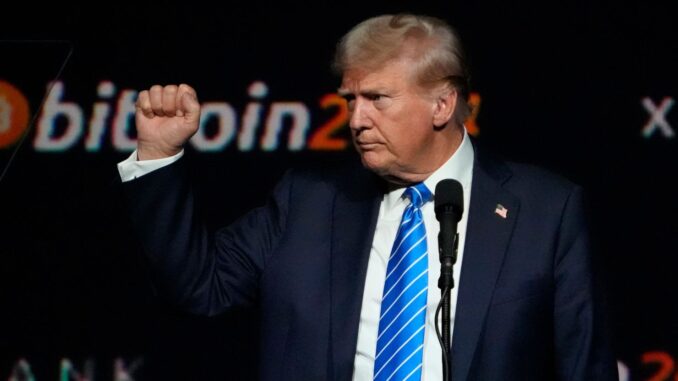
On Sunday, March 9, Jeff Park, Head of Alpha Strategies at Bitwise, stated that US President Donald Trump will refrain from making additional Bitcoin acquisitions until it approaches a price near $60,000. Park’s comments, disseminated through his official account on X, occurred amidst increasing speculation regarding potential “budget-neutral” strategies the administration could employ to secure more BTC for the newly created US Strategic Bitcoin Reserve.
Why Trump Must Wait for Bitcoin to Decrease
On March 6, 2025, President Trump issued an Executive Order establishing the Strategic Bitcoin Reserve, positioning the United States to sustain a prominent position in the digital asset arena. The administration confirmed it currently holds approximately 200,000 BTC—valued at about $17 billion at existing prices—acquired mainly through criminal and civil asset forfeiture processes, pending an audit. Although the Executive Order forbids the sale of Bitcoin in the reserve, it instructs the Secretaries of Treasury and Commerce to investigate “budget-neutral” methods to gather additional BTC in the foreseeable future, ensuring no increased cost to taxpayers.
Jeff Park’s viewpoint transcends the typical market analysis, concentrating instead on the political realities that, in his opinion, significantly impact any presidential choice to purchase BTC. In one of his posts, Park states: “I’m going to share a little secret from my practical field experience regarding how the BTC pitch operates… I possess one insight about institutions that few others do: public officials almost never purchase bitcoin based on trend/momentum and certainly not at the highs. The rationale is straightforward— they aim to avoid termination when the inevitable downturn occurs or worse, tarnish their reputation within the public sphere.”
He continues to argue that political leaders, particularly one as scrutinized as the US President, confront an asymmetric risk profile. The consequences of purchasing at a higher price—only to witness the market correct—can be disastrous from a public-relations perspective. Park speculates that the motivations for officials shift substantially when BTC falls to more appealing levels.
He mentions: “Can you envision the headlines that would arise if Trump acquires bitcoin at $100k and it plummets to $70k? Conversely, if BTC declines to substantially lower levels, the incentives for politicians and sovereigns to purchase will heighten… It is invariably a plus for the incentive consideration of an executive branch (which must secure elections) to wait for BTC to reach $60k and buy and seize the recognition.”
Park emphasizes that while a strategic reserve is likely intended as a long-term value storage, public officials strive to evade backlash in the event of immediate price volatility. This fundamental political pressure, he argues, makes them less inclined to engage in “high-risk” actions—particularly those that may expose them to accountability questions.
The newly established Strategic Bitcoin Reserve, often referred to by the administration as a “digital Fort Knox,” is explicitly designed to remain untouched over the long term. White House Crypto and AI Czar David Sacks has compared it to “a 21st-century bulwark of national financial security,” highlighting the administration’s aspirations for American cryptocurrency supremacy.
However, Park contends that specific conditions must be fulfilled for a reserve initiative to gain authentic momentum. Among these are “programmatic acquisition vs discretionary ‘studies,’” collaborative decision-making (to distribute accountability), and a degree of permanence—either through legislative protections or authoritative actions taken behind closed doors.
Park’s respect for public pension Chief Investment Officers who have proactively integrated Bitcoin also underscores the disparity in decision-making timelines: “This is fundamentally why I hold so much RESPECT for the public pension CIOs who have purchased BTC or invested in crypto strategies. They are simply true patriots—dedicated to long-term thinking for the benefit of all against the potential privatized loss of one’s self. Heroes.”
His commendation highlights how these executives, contrary to politicians focused on reelection or mindful of public scrutiny, often possess greater freedom to invest for the long term, as long as they have fiduciary protections in place.
At the time of publication, BTC was trading at $82,389.

Featured image produced with DALL.E, chart from TradingView.com
 Editorial Process for bitcoinist focuses on providing meticulously researched, accurate, and impartial content. We adhere to rigorous sourcing standards, and each page is subject to thorough review by our team of leading technology experts and experienced editors. This method guarantees the integrity, relevance, and value of our content for our readers.
Editorial Process for bitcoinist focuses on providing meticulously researched, accurate, and impartial content. We adhere to rigorous sourcing standards, and each page is subject to thorough review by our team of leading technology experts and experienced editors. This method guarantees the integrity, relevance, and value of our content for our readers.








Be the first to comment